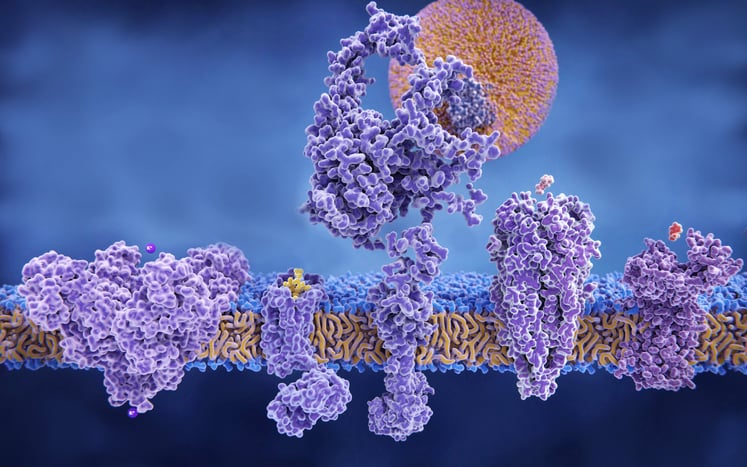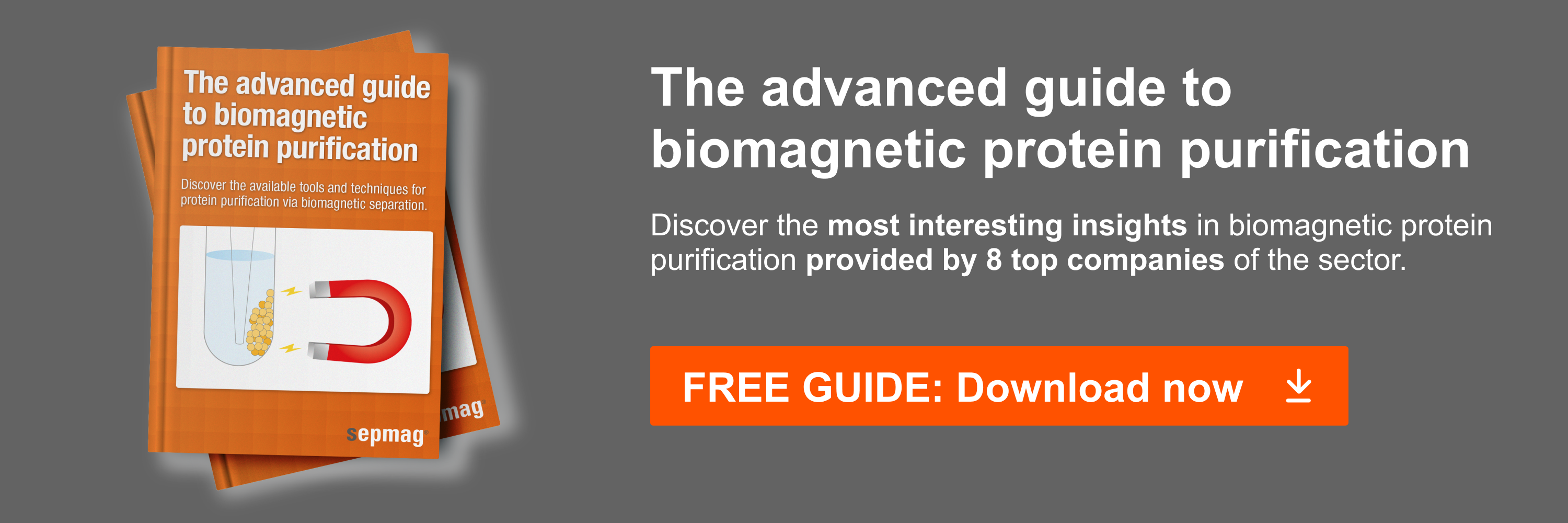Proteomics is the study of the protein in an organism. Protein is a fundamental building block of life, and proteins are the workhorses within and between cells. Biochemical pathways are built out of enzymes and ligands—without them nothing would be accomplished; plants wouldn’t produce glucose, animals wouldn’t be able to digest food, the immune system would cease to exist, and all other biological processes would grind to a halt. The fundamental importance of proteins for life makes them an important topic of study. The first step in understanding protein structure and function is to extract them. Protein extraction is the process of isolating and purifying protein from samples of whole tissue, cell cultures, or biological fluids. The protein extraction protocol used is tailored to match the starting material and the end goals of the assay.
Considering the goal of the experiment is extremely important when developing a protein extraction protocol because certain buffer choices (such as high salt, high detergent formulations) can ruin an experiment when higher order protein structure and function needs to be preserved. Hence, a new approach of protein extraction is developed and introduced by using magnetic beads.
Protein structure
In their most fundamental state, proteins are long strings of amino acids forming the primary protein structure. The order of amino acids and the length of these chains is dictated by the genetic code. Secondary protein structure is governed by hydrogen bonding and yields secondary structure in the form of alpha helices and beta sheets. From here the protein adopts a tertiary structure that is directed by amino acid side chain interactions. Quaternary structure appears when individual proteins complex together to form a larger protein consisting of more than one amino acid chain. It is important to understand that proteins get their shape from chemical interactions between the amino acids comprising them, and that protein function is determined by protein shape. Denaturation is the process of a protein losing its shape due to disruption of the chemical bonds building its secondary, tertiary, and quaternary structure. Protein denaturation leads to loss of protein-protein interactions and function, and must be avoided at all costs when designing a protein extraction protocol for isolation of proteins in functional binding assays such as ELISA or co-immunoprecipitation. The best way to avoid this is to use gentle buffers without concentrated detergents, high salt content, or extreme pH (highly basic or acidic).
Conventional protein extraction methods
The choice of preferred physical cell lysis method for protein extraction depends on several factors such as type of cells, properties of sample (liquid, solid), volume, and sensitivity of proteins being extracted. Conventionally, there are 2 main methods of protein extraction: physical cell lysis methods and solution/detergent-based cell lysis methods.
In physical methods, the cell membrane is physically broken down by shear or external forces so the membrane and nuclear proteins can be released, and they include mechanical disruption, liquid homogenization, high frequency sound waves (sonication), freeze/thaw cycles, and manual grinding.
In solution/detergent methods, the lipid barrier surrounding cells is broken down by solubilizing proteins and disrupting interactions of lipids and proteins, and they include various types and concentrations of detergents, buffers, salts, and reducing agents which function both as lysing and solubilizing agent. Compared to the physical methods, solution/detergent lysis methods use milder techniques for cell membrane disruption and are also used in conjunction with other methods such as homogenization and mechanical grinding when obtaining proteins from tissue samples.
Proteins can be obtained also based on the properties of the sample. As for solid samples (e.g. tissues), mechanical homogenization techniques for lysing cells range from physical methods (e.g. heat treatment, sonication) to chemical methods (e.g. detergent solution treatment, salting-out, and acidic pH). As for liquid samples (e.g. blood, biological samples), the proteins can be obtained based on the sample, that is by dissolving or extracting them. As for the latter, centrifugation is used to isolate cells for protein extraction (such as blood cells).
Disadvantages of the conventional protein extraction methods
- Protein denaturation, aggregation due to medium’s viscosity changes and heating;
- Clog formation form highly concentrated proteins;
- No reproducibility with homogenization and grinding methods;
- Difficult extraction for membrane and nuclear proteins with detergent solution treatment;
- Removal of detergent/buffer components before downstream analysis;
- No compatibility between high concentration of salt and detergent with protein extraction techniques;
- Not compliant with some tissues if not cell cultured;
- Requiring equipment;
- Not compatible with small volumes of samples;
- Different timeline of cell disruption for intracellular components.
Using magnetic beads for protein extraction
The magnetic beads are composites (typically >500 nm) of a no-magnetic matrix (polystyrene, silica, PVA) charged with magnetic nanoparticles (usually magnetite about 10 nm). If the nanoparticles are small enough, they are superparamagnetic (i.e. have no residual magnetization when no magnetic field is applied).
Surface coating is a feature of magnetic beads rendering them a very useful tool for molecular and immunodiagnostic applications such as protein extraction, gene cloning, gene expression analysis, cDNA synthesis, cDNA library construction, RT-PCR, quantitative RT-PCR, etc. In surface coating, the surface of the bead is modified with different ligands/chemistries which have affinity toward only a specific cell or biological molecule (e.g. protein) by recognizing its surface receptor. This in turn minimizes their non-specific binding. This feature has been used for protein isolation and purification, immunoassays (e.g. ELISA), cell sorting, and immunoprecipitation techniques.
The application of magnetic beads for protein extraction has major benefits. Magnetic beads due to their small size are easily manipulated and are uniformly distributed in solution. The external magnetic field when applied can collect and transfer them from one solution to another. Hence, homogeneous reactions are conducted with efficient heterogeneous isolation and purification of different proteins simultaneously.
Related news
- Flow Cytometry Interpretation
- Lateral Flow Immunoassay for qualitative and quantitative detection of protein
- Types of antigen





